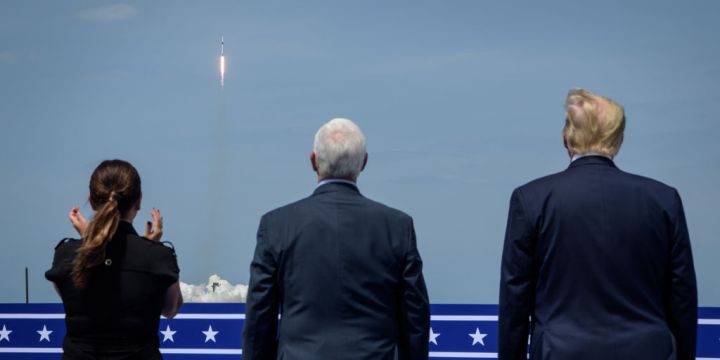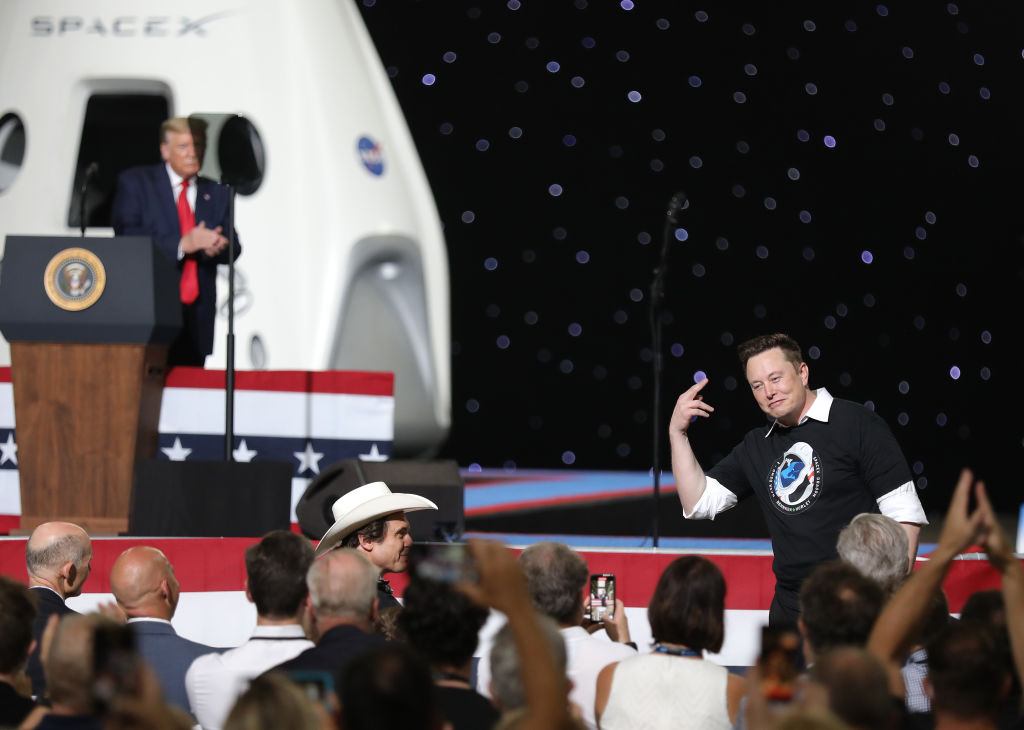Maverick Life
A small step for Elon Musk, a giant leap for SpaceX

On 30 May 2020, for the first time ever, a private company, Tesla founder and billionaire Elon Musk’s SpaceX, put humans into orbit. What did it take Musk to get there? And what does life on the space station look like?
On 30 May 2020, at 3:22pm ET (9.22pm SA time), at the Kennedy Space Centre, Florida, US, two American astronauts, Robert L Behnken and Douglas G Hurley, lifted off aboard the Falcon 9 rocket’s Crew Dragon capsule. They were on their way to the International Space Station (ISS), which orbits about 400 kilometres above Earth.
This launch was ambitious not only because it was the first time ever a private company, Tesla founder and billionaire Elon Musk’s SpaceX, put humans into orbit, but also because it was the first launch since NASA placed their space shuttles in retirement in 2011.
Musk’s dream? To send a human colony to Mars. “I’ll probably be long dead before Mars becomes self-sustaining. But I’d like to at least be around to see a bunch of ships land on Mars,” he said to Ars Technica.
On 31 May 2020, at exactly 10.16am ET (4.16pm SA), the crew docked at the ISS; they would have to wait another three hours before they could enter the International Space Station, and start a journey in orbit that will last, if all things work as they’re supposed to, for at least four months.
But the story of SpaceX – or rather of Elon Musk’s journey towards space exploration – started back in South Africa, in the early Eighties.
Elon Reeve Musk was 10 by then, and bullied ruthlessly at school. He was quoted by Ashlee Vance in his book, Elon Musk: Tesla, SpaceX and the Quest for a Fantastic Future, saying: “For a number of years there was no respite. You get chased around by gangs at school who tried to beat the (expletive) out of me, and then I’d come home, and it would just be awful there as well.”
He turned to technology as an escape and also because he was seriously good at it. Using a programme called Commodore VIC-20, he created Blastar, “a video game in the style of Space-Invaders”. He later sold the code for the game for $500 (a lot of money in those days) – remember, he was 12, a teenager.
At 17, he moves to Canada and later to the US, where he graduates with a Bachelor of Science in Physics from the University of Pennsylvania and a Bachelor of Arts in Economics from the Wharton School (also at Penn University). By 1995, he had enrolled at Stanford University’s graduate school, majoring in… physics. Two days later, he had quit. “He felt that the Internet had much more potential to change society than work in physics.” And he proved to be right.
That year, he created Zip2, “a company that provided maps and business directories to online newspapers”, sold four years later to Compaq for $307-million (about R5.2-billion, let that sink). Followed by X.com soon to be merged into PayPal, which he co-founded with fellow future billionaires Peter Thiel, Max Levchin, Ken Howery, Luke Nosek and Yu Pan, and sold in 2002 for $1.5-billion to eBay (roughly R27-billion, let that sink too).
It didn’t happen by chance: Musk is said to be working about 80 to 100 hours a week. In 2002, he founded SpaceX and in 2006 became a major founder in the electric car company, Tesla.
Musk clearly doesn’t lack vision. In 2013, he said on TED, “I did build rockets when I was a kid, but I didn’t think I’d be involved in this. It was really more from the standpoint of what are the things that need to happen in order for the future to be an exciting and inspiring one. And I really think there’s a fundamental difference, if you sort of look into the future, between a humanity that is a space-faring civilisation, that’s out there exploring the stars, on multiple planets, and I think that’s really exciting, compared with one where we are forever confined to Earth until some eventual extinction event.”
And the rest is history in orbit. SpaceX was the first private company in 2010 to launch “a payload into orbit and return it to Earth intact — something only government agencies like NASA or Russia’s Roscosmos had done before.”

CAPE CANAVERAL, FLORIDA – MAY 30: U.S. President Donald Trump acknowledges Spacex founder Elon Musk (R) after the successful launch of the SpaceX Falcon 9 rocket with the manned Crew Dragon spacecraft at the Kennedy Space Center on May 30, 2020 in Cape Canaveral, Florida. Earlier in the day NASA astronauts Bob Behnken and Doug Hurley lifted off an inaugural flight and will be the first people since the end of the Space Shuttle program in 2011 to be launched into space from the United States. (Photo by Joe Raedle/Getty Images)
The entrepreneur’s decade of space conquest was, of course, accompanied by a few spectacular explosions, countless personal Twitter crashes and some seriously weird dance moves in China. But conquer space he did.
Now, his company has sent two astronauts safely into orbit, had its Falcon 9 landed back nine minutes after liftoff on the SpaceX drone ship dubbed ‘“Of Course I Still Love You”, with the precision of a surgeon’s cut, and commercial space flights luring us like the sirens beguiling Ulysses.
As commercial flights become a thing, travelling to space – just like with air travel – will compel specific space crew outfits. Forget Spock’s rigid plastic-tin-lookalike orange spacesuit, and get ready for super stylish spacesuits; we’re talking Under Armour for Virgin Galactic and superhero silhouettes for SpaceX.
The New York Times’ Vanessa Friedman explains that the prototype for the SpaceX suits that both astronauts eventually wore on 30 May “was created by Jose Fernandez, a costume designer who worked on Batman v Superman, The Fantastic Four, The Avengers, X-Men II and — well, you get the idea…”
A notable change as the first all-woman space walk – by NASA astronauts Jessica Meir and Christina Koch – only happened in October 2019 because, essentially, there was no appropriate spacesuit designed, until then, for female bodies.
If you finally make it to orbit, and to the ISS, NASA has created some really captivating videos about life – including how astronauts wash their hair, sleep, pee and exercise – inside the International station.
In 2012, Expedition 33 Commander Suni Williams filmed herself floating in the International Space Station, giving a pretty detailed tour of the station’s facilities. It is fun, informative, quite surprising and totally worth a watch. Meanwhile, NASA astronaut Karen Nyberg shows how to run inside the space station and how to wash your hair using condensed water.
As for food, it’s not that different from earth food, “bar a few very tasty victuals – and the scents that usually go with a meal”, says Maverick Life Malibongwe Tyilo.
“[Astronauts] eat a diet familiar to us Earthbounds: three meals a day plus snacks, in line with their caloric needs.
“If a vacay in space is still on your bucket list, you’ll get water through a new regenerative environmental control and life support system [that] will give the station the ability to recycle urine and the condensation that the crew breathes into the air into pure water that can be used for drinking or to cool the station’s systems,” says Tyilo. Buckle up. DM/ ML
This story was first published as a newsletter; click here if you would like to sign up for our newsletter to get the best of Maverick Life delivered to your inbox every Sunday morning.
















 Become an Insider
Become an Insider